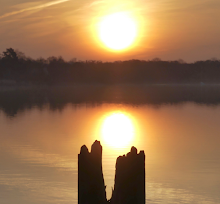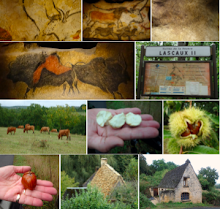Taiaroa Head, the promontory of Otago Peninsula, some 35 km east of Dunedin, was our destination yesterday for a long-needed wildlife outing.
Taiaroa Head is right next to the very narrow and much trafficked sailing route between Dunedin harbour and the Pacific Ocean.
Regardless, all sides of Taiaroa Head are very busy with seabirds. The building on the very top is the Albatross Centre.
 |
| Blue Penguin / BP (Eudyptula minor). This species is the smallest of all penguins. Adults are about 33 cm in standing height and about 1 kg 'heavy'. |
First, we used about an hour cruising around the Head to encounter the odd sea- or airborne wildlife.
 |
| New Zealand Fur Seal (Arctocephalus forsteri). |
 |
| The two colour morphs of Otago Shag (Leucocarbo chalconotus). |
 |
| Sooty Shearwater (Puffinus griseus). |
. . . and then! The first albatross flying in from the ocean and just at water level.
 |
| Northern Royal Albatross (Diomedea sanfordi). |
Indeed a magnificent bird with its standing height of 115 cm, a weight of 6-8 kg and a wingspan of 300 cm.
Just next to the lighthouse some Royals are nesting. We will return to them.
An adult male of New Zealand Sea Lion (Phocarctos hookeri) was the last and the heaviest wildlife item on the cruise agenda.
We then proceeded to the Royal Albatross Centre on top of Taiaroa Head to learn more about the royal birds and see some up close. In order not to disturb the royalties we observed from inside a "blind" with one-way windows, so we could see the birds but not vice versa.
A royal couple (female and male look alike). The sitting bird is warming a 4-week-old "albatrosling".
You can just make up the beak of the chick aft of the parent.
The Royal Albatross is a great bird, – in all aspects.
We were very fortunate to see these birds both flying and at their nesting site.
We remained at Taiaroa Head for we had yet another activity before we could call it a day.
After sunset we (together with 88 other folks) walked downhill to the beach and the purpose-built viewing platform. Everybody waited for some little Blue Penguins (BP) to return ashore from a hard working day at sea.
The first raft of penguins appeared shortly after, got out of the water and became a waddle of penguins. Both people and penguins stared at each other. As it was a dark evening some lights were left on the platform (apparently not disturbing the BPs). Still, it was an ISO-challenge to take respectable photos. I got some at 12.800 that are OK, but not great.
Once amongst the rocks the individuals scuttled towards their front door in the upland grassy part where their partner loudly welcomed them.
. . .
We were back in Dunedin shortly before midnight but still got an early start this Tuesday morning because we had a bus to catch.
 |
| Downtown in bonnie Clyde. Our accommodation is Dunstan House, the building with the red roof. |
By noon we found ourselves in the village of Clyde in central Otago, the driest, sunniest, warmest and coldest region of the South Island.
We are staying in the historic gold-rush hotel Dunstan House where once the cancan girls swung their hindquarters and the gold-diggers spent their hard-earned money.
We have got our bikes, were briefed about the route, the dos and don'ts, have tested the equipment and are now ready to hit the bike trail tomorrow morning after a breakie.
Ten days on the roads of Otago should bring us lots of unforgettable experiences.











































